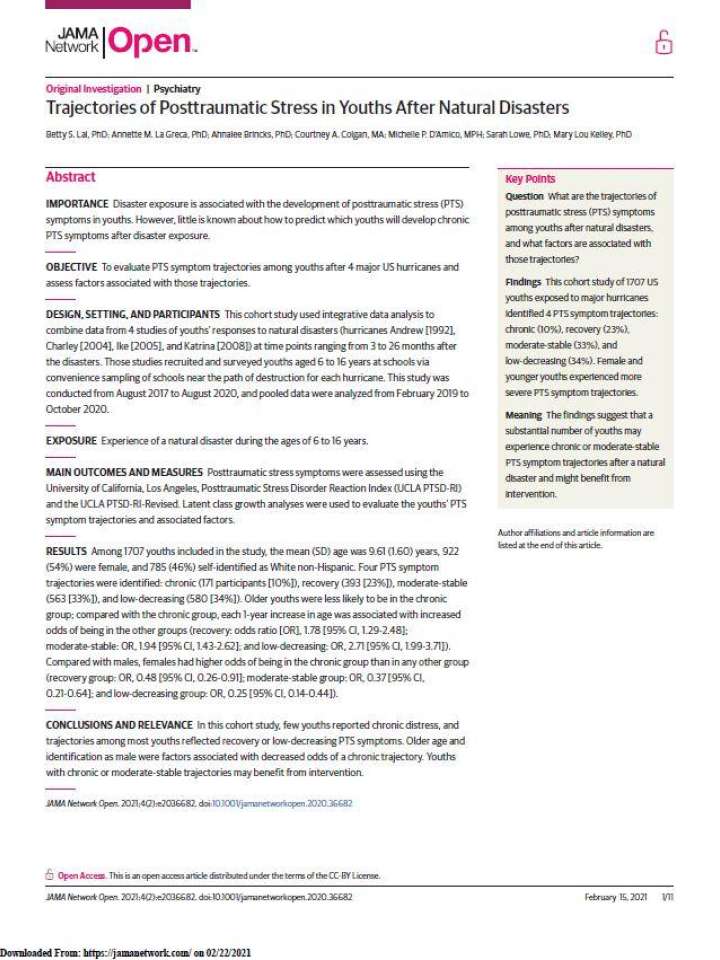Trajectories of posttraumatic stress in youths after natural disasters
With use of integrative data analysis and latent class growth analysis, this study pooled data from studies of 4 of the most destructive hurricanes in US history: hurricanes Andrew, Charley, Ike, and Katrina. Hurricanes are important to study because the frequency and intensity of severe storms are projected to increase owing to climate change. The objectives of this study were to assess trajectories of youths’ Post-Traumatic Stress (PTS) symptoms beyond the first year after a disaster and to evaluate factors associated with those trajectories.
On the basis of the literature, the authors expected to observe 3 to 4 trajectories of PTS symptoms; we also expected participants who were younger, female, or racial/ethnic minorities to be classified in more-distressed trajectories. Of note, youths of racial/ethnic minority groups are more likely to experience racism and social contexts that are associated with greater risk of harm during disasters.
In this cohort study, few youths reported chronic distress, and trajectories among most youths reflected recovery or low-decreasing PTS symptoms. Older age and identification as male were factors associated with decreased odds of a chronic trajectory. Youths with chronic or moderate-stable trajectories may benefit from intervention.
Explore further
